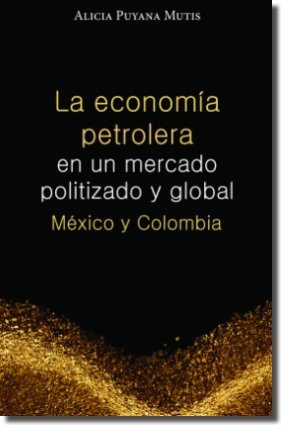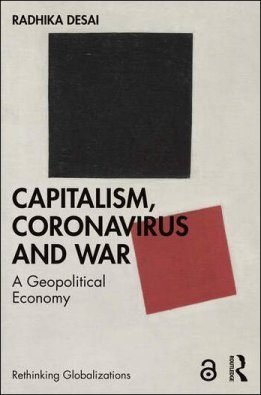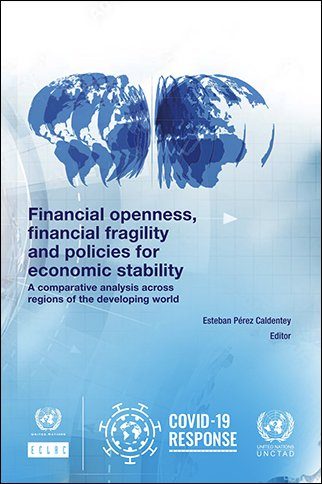Publisher: Third World Network Year: 2023 No. of pages: 42 Download now About the Book…
The Oil Economy in a Politicised and Global Market. Mexico and Colombia Author: Alicia Puyana Mutis

Publisher: FLACSO, MEXICO
ISBN-9781783083824
E-book versions available at:
https://play.google.com/store/books/details?id=fwteBgAAQBAJ&hl=es
About the Book
The book is the result of careful research and reflection of events that since the late nineteenth century marked the future of the global oil industry. The author has been analyzing oil international markets and the effects of oil bonanzas upon oil exporters since the late 1980s, when British Petroleum found two gigantic oil fields in Colombia: Cusiana and Cupiagua.
The book illustrates how that singular commodity has molded the economies and societies of hydrocarbon rich countries such as Colombia and Mexico, which were important for the world oil players already at dawn of the second decade of the twentieth century. It clearly explains why industrialized countries become addicted to oil and since the very early WW Century, oil has become the blood of the global political, military and economic system. Therefore, owning and controlling oil resources grew into the policy axis of the super powers. There are two main reasons: First, the extraordinary value of oil for the military prowess of France, England and the United States, and second, its centrality in the entire production system. For all of these, it is impossible to affirm that the oil market has ever been or could be a competitive market.
Colombia and Mexico have differed in the design of their economic policies in general and most notably regarding oil. Both countries nationalized the oil industry, although in different ways and times. Colombia eliminated concessions in the 50s always maintaining a pivotal participation of foreign investments in exploration, production and trade of oil. Mexico totally nationalized its industry in the 30s. However, the two countries resemble the effects of the oil industry on society, economy, institutions and political economy in general: depletion, oiling of the fiscal accounts, backward agriculture and manufacturing, and precariousness of employment and income. These claims emerge clearly and logically out of the analysis of the Mexican bonanza with Cantarell and the Colombian one with Cusiana and Cupiagua. This parallel sheds light on the likely effects of recent Mexican energy reform and is certainly a great contribution to national and international understanding on the problems oil posses to national economies, dependent on oil exports.
CONTENTS:
Introduction
CHAPTER I.
Oil: a global commodity in a market that never was
- The oligopolistic path of oil market, 1859-1973
1.1 The “Texas Railroad Commission (RRC)” agreement. The origins of the market suppression, 1917 -19281.2 From the Twenty Eight the Seven Sisters, 1928-1940 - Oil Under OPEC rules, 1973-2012: Is an oil market emerging?
2.1 The prices under the OPEC rules
2.1.1 The first years of OPEC: 1973-1981
2.1.2 The costs of success, ¿ 1982-1998: A return to the beginning?
2.1.3 Towards a new price boom(?): 1999-2013
CHAPTER II
The determinants in the making of international oil prices.
- Introduction
- The rocky path of oil prices
- The surplus production capacity. A short term factor driving prices?
- The renewal of reserves and expansion of productive capacity
4.1 The development of oil reserves
4.2 Does OPEC decide or not to invest at the necessary pace and intensity?
4.3 Escalating costs of adding reserves in the last years
4.4 The addition of reserves. Some concepts
4.5 The evolution of reserves in long cycles perspective
4.6 The never ending accumulation of oil reserves: Did Hubert fail? - Appendix.
Appendix 5.1 The faulty projections of world oil prices and oil USA production
Appendix 5.2 The Hotelling model
CHAPTER III
World oil supply and demand: Two forces in unending change.
- Introduction
- The models
- Energy security: the power of politics behind the oil market
3.1 What does energy security really meant?
3.2 The measurement of energy security - Energy security and the dynamics of oil supply and demand
4.1 Short term strategies
4.1.1 Supply’s measures: stock accumulation and strategic reserves.4.2 Restrictions on demand.4.3 The long term policies shaping the structure of oil supply and demand:
4.3.1 The rise of oil production in no OPEC countries
4.3.2 The ascend of exports
4.3.4 The access of private capital to reserves. The impacts on prices and demand
4.3.5 Diversifying the sources of energy supply: biofuels4.4 Changing the dynamics of oil consumption
4.4.1 The deceleration of oil demand
4.4.2 The lessening of oil and energy intensity of economies
4.4.3 The dependence on oil imports
4.4.4 The diversification of consumption by energy source
CHAPTER IV
Production and consumption of oil in Mexico and Colombia, 1920-2012
- Introduction
- From the first years to the debt crisis 1921-1982 2.1 Oil in national economies during the economic liberalism era, 1900-1945. 2.2 Oil in the postwar period, the import substitution and the debt crisis. 1945-1982. 3. The return to liberalism. Changing the role of oil in the national economies, 1982-2012 4. Contractual reforms in Colombia. Constant and costly pursuit of foreign investment 5. The Mexican energy reform. The contracts with private investors and fiscal policy.
CHAPTER V
The history of two bonanzas: the political economy of oil in Colombia and Mexico during the neoliberal economic model: 1980-2012
- Introduction
- About oil bonanzas affecting Mexico and Colombia.
- The political economy of oil in two early oil exporting developing countries.
3.1 General concepts
3.2 The oil bonanzas of Colombia and Mexico. Some political and economic effects - The size and duration of oil bonanzas.
4.1 Cantarell’s bonanza
4.1.1 Volume y value of Cantarell’s bonanza
4.2 Colombian price and volume oil bonanzas
4.2.1 Volume bonanzas
4.2.2 Price bonanzas - The oil rent.
5.1 The petrolification of national economies
5.2 The finance of state oil companies 5.3 The distribution of oil rent
CHAPTER VI
Effects of oil wealth in Colombia and Mexico. The Dutch Disease predictions did came true
- Introduction
- The basic Dutch Disease (DD) model
- Is it justified to prevent DD and how to do it?
- The lessons of the oil shocks of the 1970 and 1980 decades
- The econometric DD model used in this work
5.1 Overview
5.2 The central equations
5.3 The analysis unit root models to Colombia and Mexico
5.4 Econometric model
5.5 Correlation analysis - Appendix Appendix
6.1 The basic Dutch Disease Model.
CONCLUDING REMARKS
REFERENCES



